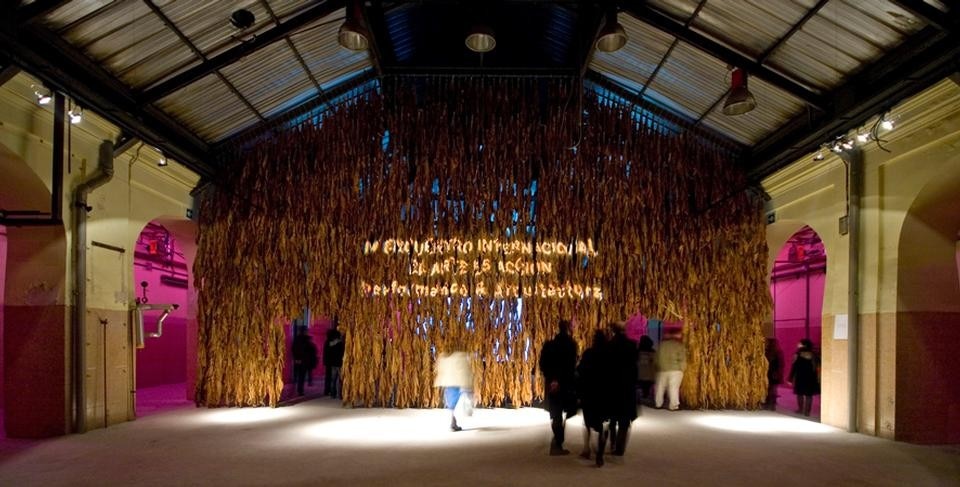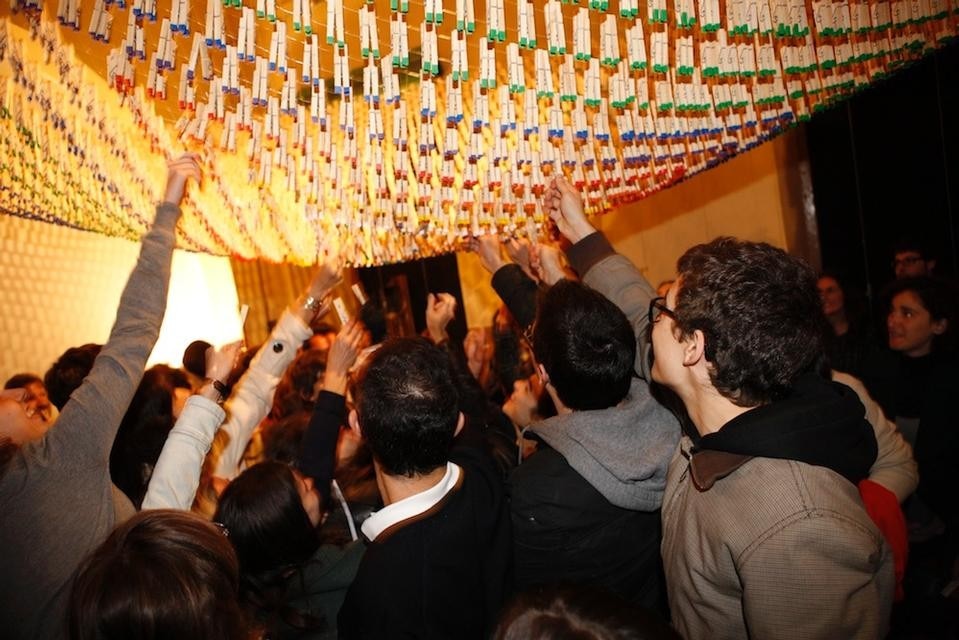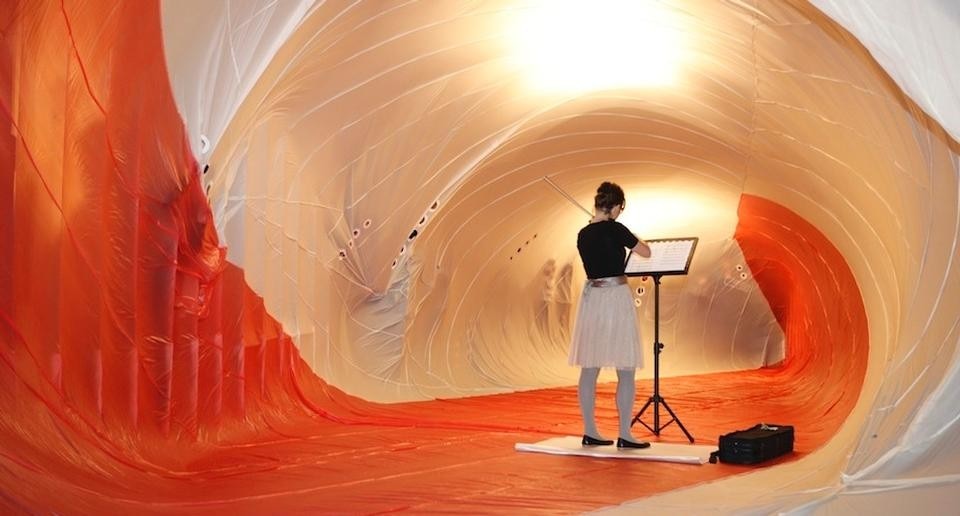Art has already taken advantage of these situations since the eighties, and urban art has almost become institutionalized. But is architecture claiming these tools to practice? This ambiance leads me to claim that architects must indeed go swiftly back to the streets [2]. If architects design cities, urban spaces and therefore the very city's streets , shouldn't architects be the most qualified people to perform there? In this context and going by the title Performance & Architecture, a set of actions and exhibition were held in Madrid's Tabacalera Building, a former cigarette factory now used for cultural purposes. The artists, curators, architects and critics who participated in this forum included Didier Faustino & Richard Siegal, Pilar Echezarreta, Luis Úrculo, Martin Huberman, Darya von Berner, Andrés Jaque, Héctor Zamora, Bestué – Vives, Pedro Gadanho, Theo Lorenz, Iván López Munuera, Selina Blasco, Carson Chan and Ruth Estevez.

Above: IKEA disobedients by Andrés Jaque explored domestic scale through a critical performance over the societies that appear in the Ikea catalogues. Photo Javier Vidal-Jorge Lopez Conde.

(Nu) in Segway by Darya Von Berner.
Some of the participants showed performances that interacted with the building itself, taking advantage of the conditions of the space. For example, the piece called (Nu) in Segway, by artist Darya Von Berner occupied a wall with a huge 3D screen, amplifying local space to the infinite. This project illustrated simultaneously the difference between real and virtual body-spaces, linking the video screened on the wall with a live performance.
Covers by Luis Úrculo from Luis Úrculo.
Architect Luis Úrculo and artist Cristina Blanco collaboratively sought to represent the most well-known architectural landmarks with daily domestic objects. Their video project Covers includes these quotidian devices, translating them into ensemble of popular objects, like a stack of plates or a few Hi-Fi systems. During the performance, Úrculo and Blanco demonstrated that the Guggenheim Museum New York is personified in our kitchens every day.
Focusing on subjects such as the city, space, the body, and memory, they tackle their disciplines 'speaking about art from architecture and about architecture from art.'

IKEA DISOBEDIENTS. Los que desobedecen a Ikea from Andrés Jaque.
Agencement with air by Pilar Echezarreta created a magical instant, with a low-cost inflatable structure where a musician played a violin concert inside while the audience, in voyeuristic mode, spied upon her through the gaps of the structure. Martín Huberman or Héctor Zamora proposed the insertion of foreign bodies in different contexts, with the aim to activate the space. Huberman used a daily object, the clothes pegs for hanging out the clothes, to create a performance where all the audience is involved to create a piece of art. This created one of the most participatory moments of the event, the audience had to wait until an alarm sound indicated everybody has to jump to hang their clothes pegs in a net placed on the ceiling. Finally, Didier Faustino and Richard Siegal raised the interaction between art and architecture from the body scale by means of a carpet that was transforming to build a space of paradoxical intimacy.

The program finished off with a forum for critical thought on art and architecture, which was held at the Ministry of Culture Auditorium. Participants in this forum analyzed the different complex affairs between the architects and how they appropriate of art performance methods, and vice versa, how artists use architectural contexts to work within. The event forms part of the international forum Art is Action, now in its fourth year, organized by the Ministry of Culture of Spain. Performance & Architecture was curated by Ariadna Cantis, an independent architectural curator who divides her activities between spreading architectural advocacy, research and curating, with the aim of generating critical opinion on architecture and contemporary culture. The entrance space was designed by C+ Arquitectos, headed by Nerea Calvillo, who transformed the already marvelous hall with a wall made of sun-dried tobacco leaves.
[1] Speakers' corner placed in Hyde Park in London is the most noted one. This concept has been explored and reviewed by several artists as Michel François in 2005.
[2] Pedro Gadanho, Back to the Streets: The Rise of Performance Architecture.
[The authors extend special thanks to curator Ariadna Cantis for providing critical information for this report.]

Bathed in light
Drawing from its more than 30 years of experience, SICIS introduces backlit pools in Vetrite, a patented solution that combines design, technology and function.



